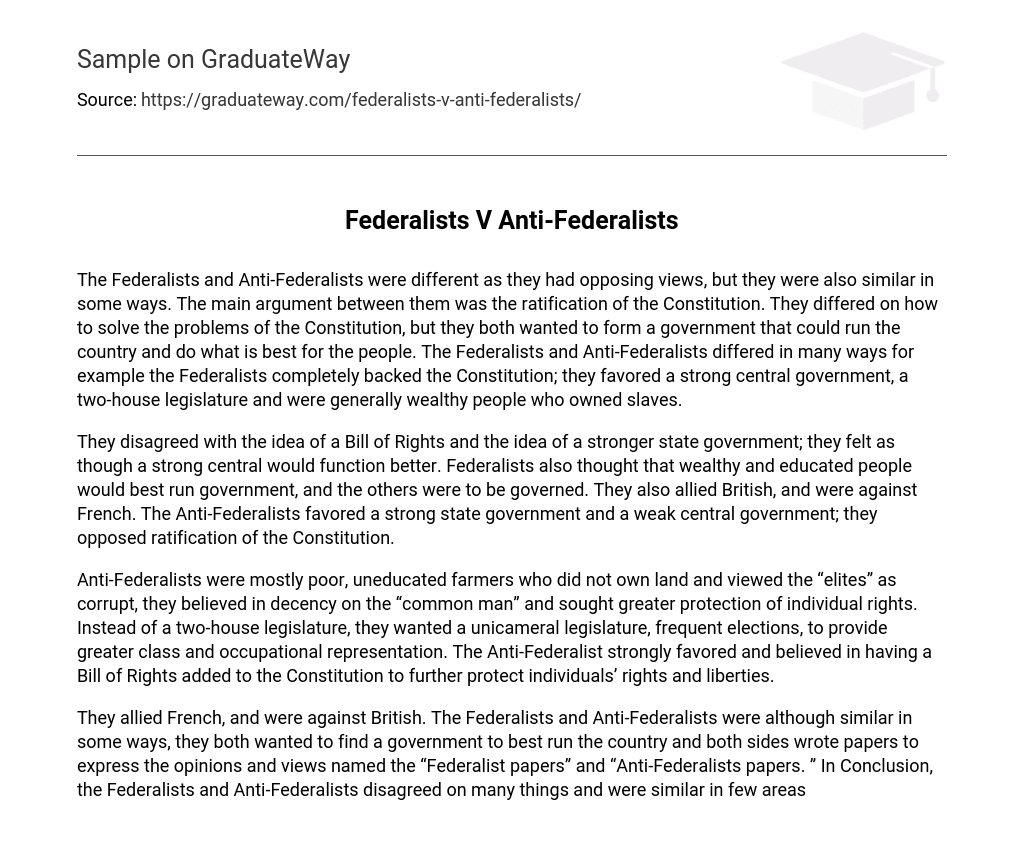The Federalists and Anti-Federalists were different as they had opposing views, but they were also similar in some ways. The main argument between them was the ratification of the Constitution. They differed on how to solve the problems of the Constitution, but they both wanted to form a government that could run the country and do what is best for the people. The Federalists and Anti-Federalists differed in many ways for example the Federalists completely backed the Constitution; they favored a strong central government, a two-house legislature and were generally wealthy people who owned slaves.
They disagreed with the idea of a Bill of Rights and the idea of a stronger state government; they felt as though a strong central would function better. Federalists also thought that wealthy and educated people would best run government, and the others were to be governed. They also allied British, and were against French. The Anti-Federalists favored a strong state government and a weak central government; they opposed ratification of the Constitution.
Anti-Federalists were mostly poor, uneducated farmers who did not own land and viewed the “elites” as corrupt, they believed in decency on the “common man” and sought greater protection of individual rights. Instead of a two-house legislature, they wanted a unicameral legislature, frequent elections, to provide greater class and occupational representation. The Anti-Federalist strongly favored and believed in having a Bill of Rights added to the Constitution to further protect individuals’ rights and liberties.
They allied French, and were against British. The Federalists and Anti-Federalists were although similar in some ways, they both wanted to find a government to best run the country and both sides wrote papers to express the opinions and views named the “Federalist papers” and “Anti-Federalists papers. ” In Conclusion, the Federalists and Anti-Federalists disagreed on many things and were similar in few areas





